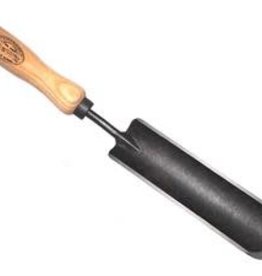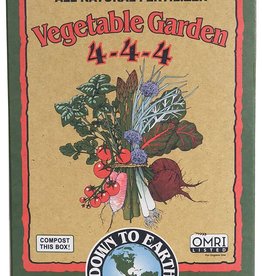HM Napoli F1 Carrot 250 SEEDS
| Availability: | In stock (40) |
Photo and Description Credit - High Mowing Seeds
An early, versatile carrot for all seasons.
Great flavor and color as an early spring or baby carrot, but will continue to grow to full size for fresh market or storage. Great for high tunnels and one of Eliot Coleman's top choices for overwintering! Available as raw or pelleted seed.
- Long storage
- 5-7" Nantes-type
Disease Resistance Details
Intermediate Resistance: Alternaria Leaf Blight, Black Rot, Cercospora Leaf Blight, Cavity Spot, Liquorice Rot
11,000-37,500 seeds/oz (24,250 avg), 175-600M seeds/lb (288M avg) M=1,000
Seeding Rate
- Early bunching carrot plant approximately 45 seeds/ft,
- Full sized carrots plant approximately 30 seeds/ft, and for
- Storage varieties plant 15 seeds/ft.
- Early small bunching – 45M seeds/1000’(~ 1.9 oz), 1.4MM seeds/acre,(~ 5 lb), using ~45 seeds/ft, 18” row spacing;
- Full size – 30M seeds/1000’,(~ 1.3 oz), 1MM seeds/acre,(~ 3.3 lb), using ~30 seeds/ft, 18” row spacing;
- Storage – 15M seeds/1000’, (0.65 oz), 500M seeds/acre,(~ 1.7 lb), using ~15 seeds/ft, 18” row spacing. M=1,000, MM=1,000,000.
Cultural Info
Carrots are often classified by their root shape:
- Nantes – Blunt tips; straight, cylindrical roots 5 to 7 inches long; sweeter than most other types; good raw eating. Prefers loose soil.
- Chantenay – Shorter than other types, stocky, taper to a rounded tip; rich, sweet flavor and good storage potential. Coarser texture than others.
- Imperator – Long, tapered roots with stocky shoulders and strong tops; slightly fibrous texture. Stores well.Most common type found in groceries. Prefers deep, sandy soil.
- Danvers – Shorter than Imperator varieties, thick-rooted cylindrical shape, widely used in processing, good for juicing. Stores well. Performs well in heavy, clayey soil.
Soil Nutrients and Requirements
Do best in fertile sandy loam, but will perform well under most conditions if appropriate varieties are chosen. For compact soils choose tapered carrots that can wedge their way into soils like Chantenays or Danvers types. Optimal soil temperature for germination is 55-75°F.
Best quality arises from raised beds, free of stones and debris. Imperator types should only be grown on raised beds that have 10-12” tilled zones.
Seeding Depth
1/4-1/2"
Plant Spacing
Thin to 1-2" depending on desired size
Row Spacing
18-24"
When to Sow
Direct seed as soon as soil can be worked in the spring through mid-summer.
Other Considerations
Weeding shortly after germination allows slow-growing carrots to get a head start against fast-growing weeds.
Harvest
Harvest when carrots have appropriate coloring and flavor has developed. Carrots hold well in the field for up to 3 weeks in the summer and longer in cool conditions. Some varieties, like Napoli, may be over wintered outdoors or in the high tunnel for an early spring harvest. For storage carrots dig roots after frost but before ground freezes.
Storage
Store topped carrots in near freezing temperatures with high humidity. Unwashed carrots store just as well as washed but may stain during storage.
Pest Info
Carrot Weevil and carrot rust fly are common pests. Floating row cover can be an effective control for the Carrot Weevil and Carrot Rust Fly. Other tips include delay sowing seeds until June to avoid the first wave of flies, as well as sowing carrots seeds thinly, as the carrot rust flies are attracted to the smell of bruised carrot foliage.
Disease Info
Fungal leaf blights caused by either Alternaria dauci or Cercospora carotae can cause severe defoliation and greatly reduce yields. White mold (Sclerotinia sclerotiorum) manifests as a cottony white mycelium around roots and lower plant parts, usually late in the season. See Cornell University’s Vegetable MD Online for more information.





